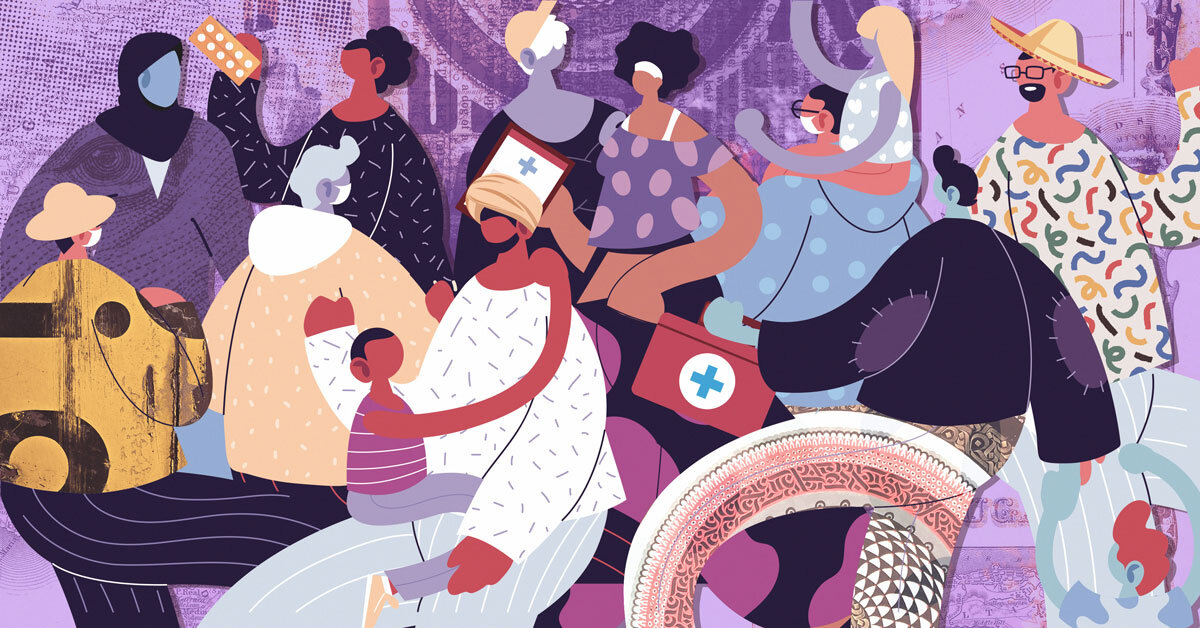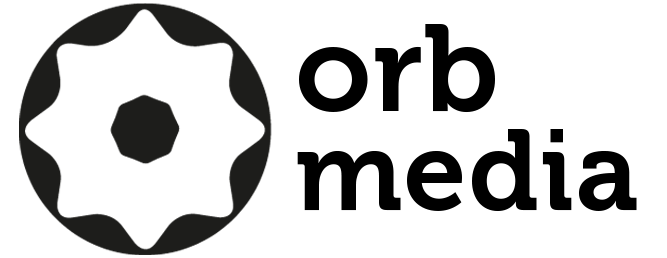
POWERFUL AND PROVEN:
How Community Health Workers Build Health and Equity Worldwide
Written by Nick Slater
Edited by Victoria Fine
Community health workers (CHW) have proven adept at solving some of the world’s toughest health challenges over the years. Now, new global research from Orb Media has uncovered ways CHW could help address the most pressing health and equity crises of the present—including the COVID-19 pandemic.
HOW TO USE THIS PACKAGE
This global investigation is designed to be a set of base resources for local reporting on the quality and equity of community healthcare systems. Our research focuses on evidence-driven opportunities associated with the deployment of Community Health Workers.
By creating a constellation of reporting centered on community health and CHWs, media outlets can not only help improve public understanding of how equity and health works in their community but can also inspire new ideas for how CHW programs and other community driven solutions can be integrated now and in the future.
Orb Media has included an array of resources to support your reporting, including suggested angles to localize this original research.
There are dozens of ways to connect your local reporting to this global theme and support your community while it navigates the COVID-19 crisis.
This global summary is available to the public at www.Orbmedia.org and the full report as well as underlying reporting assets are available via password protected log-in to your team.
To gain access to the entire reporting folio, including leads and multimedia assets, register or sign in.
2020: A Moment of Global Attention on Health & Equity
From the bustling capital cities of Asia to the rural towns of North America, public health has become a top concern of policymakers, pundits, and individuals everywhere. In the face of the current threat of COVID-19, societies are urgently looking for answers to their most pressing local health needs.
Meanwhile, a meaningful intervention to public health crises might already be found within our own communities.
According to new global research from Orb Media, Community Health Workers (CHWs) provide a versatile, relatively affordable, and proven option for strengthening public health that have already achieved results in countries around the globe.
Child Mortality Rates: A Lens To Identify Global Health Success Stories
How do you comparatively assess the health of communities, to understand what is working?
Child mortality -- the rate at which children die before their 5th birthday -- is one of the key indicators of a country’s general public health, both because it tends to be well-measured over time and has ripple effects in so many other aspects of health.
According to a 2018 study from the World Health Organization (WHO), globally, around 1 in 26 children die before turning 5. This is down from 1 in 11 back in 1990, with several countries having made significant gains in reducing the mortality rate of children.
What is surprising is that there are countries that have lowered their child mortality levels without ratcheting up their healthcare expenditures.
A Global Model: What countries are doing surprisingly well at keeping kids alive based on their formal healthcare system?
Orb Media undertook an ambitious project to collect, analyze, and interpret national data on child mortality from 160 countries. We used metrics associated with mortality rates of children under the ages of five because the topic is a clear, well-tracked signal of overall community health.
We started by building a statistical model that allowed us to compare a country’s actual child mortality rate vs. its “expected” rate, based on factors like amount of money invested in healthcare (from different sources) and the number of formally certified healthcare workers.
Analysis of the data entailed grouping the world’s countries into five segments, with “1” designating the overachieving countries and “5” designating those that underperformed (i.e. had a child mortality rate higher than expected, given their investment in healthcare). We did this to see if there were things we could learn by looking at healthcare from a macro perspective.
The collection of countries that this analysis segmented into “Group 1” was worthy of further inquiry and explanation because at first glance, they seemed to have little in common. They were located in different regions, had different styles of government, and wide variations in national demographics. These countries also had different religions, income levels, and cultural traditions. Yet, all countries managed to achieve significant reductions in their child mortality rates without increasing their spending on formal medical systems from 2010 to 2019.
After analyzing the data, we selected seven countries from Group 1 whose results were especially intriguing (for a variety of reasons): Thailand, Argentina, Hungary, Mexico, Bangladesh, Honduras, and Chile. These countries had successfully lowered their child mortality rates. How this was achieved, however, was not yet clear.
Common Barriers: Geography, Funding, Culture Clashes
Orb Media dove deeper: conducting interviews with health experts in some of the world’s leading universities and institutions, poring over scientific studies from the past several decades, and searching for any common threads that might explain how these seven seemingly “random” countries had outperformed expectations regarding child mortality.
The challenges these countries faced to keep children healthy had a number of common characteristics.
Funding was often scarce (or at least not as robust as what was sought), and the differences in need between urban and rural communities often came up as problems to be addressed. These countries each also faced unique challenges, whether that was virulent xenophobia in Hungary, religious skepticism of healthcare professionals in Bangladesh, or linguistic issues among the indigineous peoples of Mexico.
While each of the seven countries in the Orb Media case study used a mix of different strategies and tools to address their child mortality crisis, they all had one thing in common: they all deployed community health workers, commonly known as CHWs, to address a diverse range of health issues at the community level.
A Common Mode of Improvement: Community Healthcare Workers
Community health workers are people from local communities who are enlisted by peers, the government, nonprofits, and/or NGOs to provide vital health services to those who might otherwise go without. Their missions can vary widely, as can their training and equipment. This versatility is one of their key advantages—in a short period of time, they can be mobilized to meet many of their communities’ most pressing needs. From an equity perspective, they also can be extremely effective at reaching historically underserved populations.
Orb Media’s research sheds light on just how adaptable community healthcare workers can be, leading to a global conversation of how they might be best deployed today to effectively manage the COVID-19 pandemic.
For example, community health workers in Hungary were engaged in a mission to combat malnutrition among children and expecting mothers, helping to distribute vitamins and complementary baby foods to those struggling with poverty. In Chile, they helped teach new mothers how to care for their newborns by recognizing common symptoms of illness, as well as prevent issues like trauma and hypothermia. Community healthcare workers in Thailand, on the other hand, not only distributed supplies and engaged in awareness campaigns, but also helped previously isolated clients reintegrate into the community to improve their overall quality of life.
That last point is particularly important, because it illustrates one of the key advantages that community healthcare workers have over their more formal counterparts. Because they come directly from the communities which they serve, they also have an unparalleled ability to understand the challenges faced by their clients. As a result, community healthcare workers are equipped to both contextually listen and educate the people they serve in ways that are beyond the grasp of well-credentialed outsiders. Orb Media’s research shows they are also adept at providing both mental health services and behavioral support. They also have potential applications for use far beyond caring for mothers and young children.
While community healthcare workers are not a panacea for the world’s health needs, the research review and data analysis conducted by Orb Media indicates that they have enormous potential to affect positive change in overall preventative health—provided they are well trained, fairly compensated, and committed to a specific task for a sustained period of time. If these conditions are met, community healthcare workers can also be invaluable in acute situations such as response to a pandemic.
Orb Media also found that there is an opportunity to look more closely at the deployment of community healthcare workers in developed countries. While community healthcare work can be found around the globe, much of the formal documentation of its effectiveness is limited to the developing world. However, such programs have also proliferated throughout countries like the United States. These programs are largely overlooked by the media but present an opportunity to deploy and continually improve service to underserved populations, such as immigrant and migrant communities, in countries whose formal healthcare systems still present a gap in care.
SUGGESTED NEXT STEPS FOR EDITORS:
Register or sign into our member database at the top of this page. Review the Table of Contents of the reporting package, starting with Orb Media’s global story on Community Health Workers. This, in combination with the summary provided above, are your springboard to your own coverage decisions.
Find which grouping your country appears in within our Global Model, to make this story even more relevant to your audience.
Review our list of Proposed Leads and Angles for help on how to localize this information for your audience.
Once you dig into reporting in your region, review our background research documents, references and available media assets for you to use. Feel free to reuse or build on anything we provide, just don’t forget to properly attribute our work.
Don’t hesitate to reach out with questions, concerns or clarifications.
We’re excited to support your work. In return, we ask that you:
2. Credit Orb Media’s work (or other graphic sources) including our original data analysis and key findings as appropriate.
3. Share your expected publishing date and link (or PDF if appears in print only) with Orb so we can aggregate, promote and learn from original reporting worldwide. In the future, we’ll pass our algorithmic and framing learnings from the story’s collective performance on to you.
4. This package was published in concert with other media organizations during the week of August 10. However, its evergreen elements remain available for your future use.

